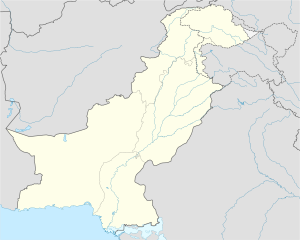상파울루 마크로메트로폴리스
São Paulo macrometropolis
밤이면 상파울루와 확장 메트로폴리탄 콤플렉스.

밤에 확장된 메트로폴리탄 콤플렉스의 위성 사진.

마크로메트로폴리스와 그 구역들.
마크로메트로폴리스의 중심인 상파울루 메트로폴리탄 지방
브라간사 파울리스타 시의 지역 단위
상파울루 마크로메트로폴리스[1](포르투갈어:는 광역 도시권의 상파울루의 대도시 지역을 수도권 상파울루 주변에 30만명의 인구, 또는 상파울루 주립의 population,[2]의 74%에 위치 중 하나이다. 요 사이에 기존 과정을 통해 등장한 Macrometrópole 파울리스타),[2]또한 확대시 Complex[3]으로 알려져 있다. 브라질 거대 도시stpopul세계의 도시 집적 [4][5][6][7]집단
상파울루 대제를 넘어, 메갈로폴리스는 캄피나스, 산토스, 소로카바, 파라이바 계곡의 대도시 지역과, 준디아이와 피라시카바로서, 교란 과정에 도시집합을 포함하는 다른 인근 도시들을 아우른다.주 수도에 추가된 이들 지역의 총 인구는 상파울루 전체 주 인구의 약 75%인 3,150만 명을 넘는다.[6]
메트로폴리탄 단지는 남미 유일의 도시 클러스터로 약 5만3000㎢의 면적을 차지하고 있으며 174개 시군을 연결하고 있으며, 그 나라의 산업 및 경제 생산의 상당 부분을 보유하고 있다.[6]
사단
| 지역[8][9] | 인구 | 시트 시티 | 인구 | |||
|---|---|---|---|---|---|---|
| 1 | 상파울루 메트로폴리탄 주 | 21,860,000 | 상파울루 | 12,310,000 | ||
| 2 | 캄피나스의 대도시권 | 3,300,000 | 캄피나스 | 1,215,000 | ||
| 3 | 북부 발레두 파라리바에 리토랄 주 | 2,550,000 | 상호세두캄포스 | 725,000 | ||
| 4 | 소로카바 대도시권 | 2,150,000 | 소로카바 | 685,000 | ||
| 5 | 바이사다 산티스타의 대도시권 | 1,880,000 | 산토스 | 435,000 | ||
| 6 | 피라시카바 어반 농지 | 1,500,000 | 피라시카바 | 410,000 | ||
| 7 | 준다이 우르반 아그로머레이션 | 825,000 | 준디아이 | 425,000 | ||
| 8 | 브라간사 파울리스타 시의 지역 단위 | 480,000 | 브라간사 파울리스타 | 170,000 | ||
| 상파울루 마크로메트로폴리스 | 34,500,000 | |||||
가장 큰 자치 단체
1,000,000+
500,000–999,999
- 상베르나르도 두 캄포 (상파울루) (822,242)
- 상호세두스캄포스(Vale do Paraiba)(79만5992명)
- 산토 안드레 (상파울루) (712,749)
- 오사스코 (상파울루) (696,382)
- 소로카바 (소로카바) (652,481)
200,000–499,999
- 마우아 (상파울루) (457,696)
- 산토스 (Baixada Santista) (434,359)
- 모기 다스 크루제스 (상파울루) (429,321)
- 디아데마 (상파울루) (415,180)
- 준디아이 (준디아이) (405,740)
- 카라피쿠이바 (상파울루) (394,465)
- 피라시카바 (피라시카바) (394,419)
- 상비센테 (Baixada Santista) (357,989)
- 이타콰퀘세투바 (상파울루) (35만6774명)
- 과루야 (Baixada Santista) (313,421)
- 타우바테 (Vale do Paraiba) (305,174)
- 라임시라 (피라시카바) (298,701)
- 프레이아 그란데 (Baixada Santista) (304,705)
- 스자노 (상파울루) (288,056)
- 타보앙다세라 (상파울루) (275,948)
- 수마레 (캠피나스) (269,522)
- 바루에이 (상파울루) (264,935)
- 엠부 다스 아르테스 (상파울루) (264,448)
- 인디아투바 (캄피나스) (235,367)
- 코티아 (상파울루) (233,696)
- 아메리카나 (Campinas) (231,621)
- 자카레이 (Vale do Paraiba) (228,214)
- 이타페비 (상파울루) (226,488)
- 호톨란디아 (Campinas) (219,039)
- 리오 클라로 (피라시카바) (201,473)
100,000–199,999
- 산타 바바라 도에스트 (Campinas) (191,074년)
- 페라즈 데 바스콘셀로스 (상파울루)(17만6000명)
- ITU (소로카바) (170,157)
- 브라간사 파울리스타 (준디아이) (164,000)
- 이타페티닝가 (소로카바) (16만)
- 이타페세리카 다 세라 (상파울루) (15만9000명)
- 핀다몬항가바 (Vale do Paraiba) (154,082)
- 프란시스코 모라토 (준디아이) (155,000)
- 상카에타노도술 (상파울루) (151,000)
- 모기 과수 (캠피나스) (149,296)
- 아티바아 (준디아이) (139,683)
- 프랑코 다 로차 (준디아이) (12만 9천)
- 큐바탕 (Baixada Santista) (12만 7천)
- 발린호스 (캠피나스) (122,000)
- 아라라스 (피라시카바) (121,282)
- 보토란팀 (소로카바) (119,000)
- 타투이 (소로카바) (118,000)
- 바체아 파울리스타 (준디아이) (11만 6천)
- 살토 (소로카바) (116,000)
- 과라팅우에타 (Vale do Paraiba) (114,000)
- 이타티바 (준디아이) (114,000)
- 포아 (상파울루)(112,481)
- 리바이랑 피레스 (상파울루) (11만2,020)
- 산타나 데 파르나이바 (상파울루) (111,000)
- 잔디라 (상파울루) (11만)
- 카라과타투바 (발레도 파라이바) (107,000)
- 이탄헴 (Baixada Santista) (10,496)
- 파울리니아 (캄피나스) (10만)
참고 항목
참고 및 참조
- ^ Zioni, Silvana; Silva, Gerardo; Passarelli, Silvia Helena (2011), Structuring dynamics of São Paulo macrometropolis: perspectives and strategies for rail infrastructure re-functioning.지오니, ; , ; , , .
- ^ a b "Macrometrópole Paulista". Emplasa. Retrieved 2016-08-31.
- ^ "Os eixos de desenvolvimento e a estruturação urbano-industrial do estado de São Paulo, Brasil". www.ub.es. Retrieved 2010-07-04.
- ^ Eugenio Fernandes Queiroga (May 2005). "A Megalópole do Sudeste Brasileiro: a formação de uma nova entidade urbana para além das noções de macro-metrópole e de complexo metropolitano expandido". Associação Nacional de Pós-Graduação e Pesquisa em Planejamento Urbano e Regional. Retrieved 2016-08-31.
- ^ "World Gazetteer – Welt: Ballungsräume". Archived from the original on September 30, 2007. Retrieved 2008-08-10.
- ^ a b c Diego Zanchetta (2008-08-03). "A primeira macrometrópole do hemisfério sul". O Estado de S. Paulo. Archived from the original on June 19, 2011. Retrieved 2008-08-12.
{{cite web}}: CS1 maint : 부적합한 URL(링크) - ^ Secretaria de Planamento de São Paulo, ed. (2007). "CAPÍTULO II DESENVOLVIMENTO REGIONAL E METROPOLITANO" (PDF). Retrieved 2014-04-04.
- ^ "IBGE releases population estimates for municipalities in 2016". IBGE. 2016-08-30. Retrieved 2016-08-30.
- ^ "Estimativas populacionais para os municípios e para as Unidades da Federação brasileiros em 01.07.2016". IBGE. 2016-08-30. Retrieved 2016-08-30.


